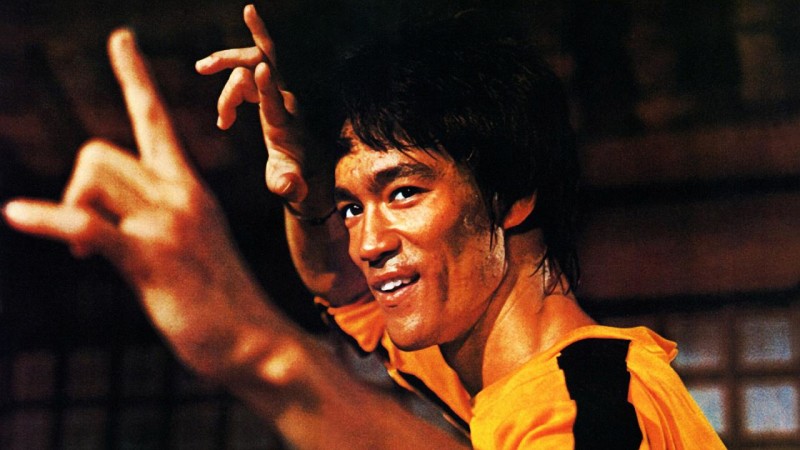In that huge area we call China a very highly advanced culture has existed since many centuries BCE. This rich culture was a popular target of nomads and barbarian tribes. As we know that was the reason for construction of the Great Wall. A developed economy plus an advanced culture, and the need to protect these, were the main reasons a very special, mystical, and complex martial art culture came into being. Throughout these centuries of conflict the intellectual-spiritual life still thrived. In this period lived Lao-Tzu, the famous wise man and philosopher who had a great impact on Chinese philosophy and also on the martial arts. Lao-Tzu wrote only one short book, the Tao Te Ching, which become the standard book of Taoism.
Taoism become a universal world explanatory principle. Under the laws of Tao they tried to explain and understand what happens in the human body (why does it become ill, for instance), aspects of everyday life, the changes in politics, and the secrets of the martial arts. Human deeds have to be in balance with the Tao, with The Law of the Universe, otherwise disharmony results, which is the source of greater trouble. This principle is true for the martial arts as well.
One of the best Chinese boxers who ever lived, Bruce Lee (1940-1973), titled his book The Tao of Jeet Kune Do. He is an important person of the history of martial arts. His style is not a classical kung-fu style; as he said it’s not even a style. I see Bruce Lee as a great bridge between the ancient, traditional kung-fu styles and taoistic theories, and the modern way of martial arts. n the past, the different schools and styles around the globe were little islands, though they had some impact on each other, through the curiosity of martial artists who learned from different masters. And of course as the population moved from one area to another, knowledge spread. But knowledge was power (as it is today as well) and that’s why it was usually kept hidden and secret. The kung-fu schools in China, and thus the styles as well, were bound to families. This traditional hiding of knowledge is one of the reasons why even today there’s a mystical overtone in the word “kung-fu”.
The word “kung-fu” means knowledge or skill, achieved through many years of study and practice. Thus kung-fu is not a word which was used only in a martial arts context. Someone can have kung-fu in gymnastics, calligraphy, poetry, painting, or any other endeavor. Since 1949 the word used by Chinese people for martial arts is more “wu-shu”; before then many terms were used to mean martial arts. In the Western world before Bruce Lee they used the term “Chinese boxing.”
Today we can watch on TV or the internet many different fightings styles, amateur or professional fights, even illegal fights without rules. We can follow fighters, see how they live, how they train, how they prepare for the next fight. We also can learn a lot of various techniques, principles, and methods. So the situation is quite different than the time when the traditional styles began to grow. The schools always rivaled each other and didn’t know each other as much as they do today. The reputation of the school depended on the question of how the masters could save the tradition. By this attitude many legendary and hard to believe stories of the masters’ skills were told, which created more interest in kung-fu. On the other hand it also generated understandable skepticism.
Without judging the issue of secret knowledge and mystical skills I go back to Bruce Lee, who is a great example of an honest and curious innovator with a very determined attitude. He turned the attention of Western people to the Chinese martial arts, and he’s also called the father of MMA. (MMA is a sport where all the martial arts can fight against each other in regulated combat. It doesn’t necessarily simulate actual street fighting, but allows a wide variety of techniques.)
Bruce Lee was not only a martial artist but also a philosopher who, through study of martial arts, researched the totality of what it means to be a human being. He said: “Adapt what is useful, reject what is useless, and add what is specifically your own.” It is a very good method of learning. It means: look deeply into the traditions, learn from other people, try to listen to what they say, then put this knowledge into your world, compare it with your experience and then release what does not fit you. Create yourself and be free. I consider that to be very practical advice. Because if we blindly reject the wisdom of the past, very likely we will walk a longer road and we can’t get as far. However we have to respect ourselves and trust in our own intuition and experience otherwise we will fall apart.
Chinese martial arts consist of many styles, and its history is full of interesting stories, and I haven’t enough space here to give an approximately objective view about it all. But I’d like to write about one more style in this article, which is Sanshou. It is also called Sanda or Chinese Kickboxing, and it was developed by the military for self-defense and also as a combat sport, where all the different Wu-shu styles can compete.The rules permit the punches used in boxing, kicks, wrestling takedowns, throws, sweeps, and kick catches. The fights are conducted on a stage covered by mats, and if the fighter pushes the other one out (or down) from the “battlefield“ three times in one round, he wins the round.
I’ve competed in Sanshou, and what I like about this sport is that it fits relatively good with my sparring approach and goals in that the fighters agree on the rules beforehand. On the street it isn’t a good idea to go to the ground and start to grapple. Your opponent can have a knife, or can have friends who will jump in, and in these cases it doesn’t matter if you are the better grappler: you are in a bad position. So I like to practice how can I avoid takedowns and stay standing, and also being aware of my surroundings. Hundreds of years ago, the fighters of the different kung-fu schools fought on a high (2-3 meters above the ground) stage, so whoever fell off could be seriously injured. Though the stage nowadays is usually just 40-50 centimeters above the ground, this still adds an element of stress which must be taken into consideration.

